
Spider Facts & Information
The concerns of a spider infestation at home include potential bites that can cause discomfort or allergic reactions, the presence of unsightly spider webs, and the general fear or unease associated with their presence.
Risks of Spiders
Fear and Psychological Impact
Spiders are commonly associated with fear and phobias in many people. The presence of spiders, especially in large numbers or of venomous species, can cause significant psychological distress and anxiety. Fear of spiders can lead to discomfort, disrupted sleep patterns, and avoidance of certain areas or activities within the home or property.
Venomous Spider Bites
While the majority of spider species are harmless to humans, some spiders have venomous bites that can cause adverse reactions. Venomous spiders, such as black widows or brown recluses, can pose a significant risk if they bite and inject venom. Their bites can lead to varying symptoms, ranging from mild irritation and pain to severe reactions, including systemic effects and tissue necrosis. It is important to exercise caution and seek medical attention if bitten by a venomous spider.
Aesthetic and Sanitary Concerns
Spider webs can accumulate quickly and create unsightly conditions in homes, particularly in corners, ceilings, and other areas where spiders build their webs. The presence of spider webs, along with dead insects caught in them, can contribute to a perception of poor cleanliness and sanitation. It may also attract other pests, such as flies or mosquitoes, which are potential food sources for spiders.
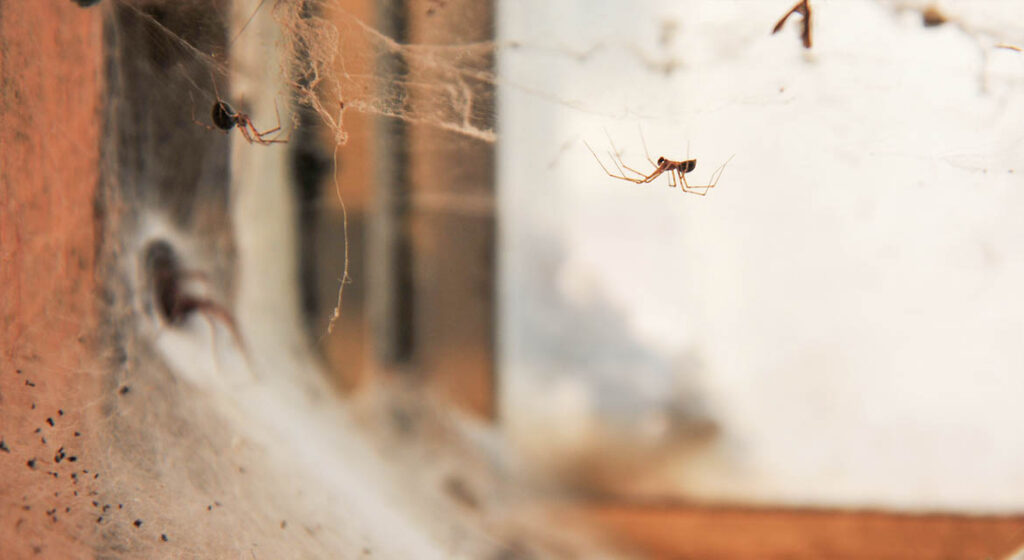
Truly Nolen GUARANTEE
If you’re not completely satisfied, you’ll get a full refund on your most recent service with our 100% money back guarantee.
Common Species of Spiders
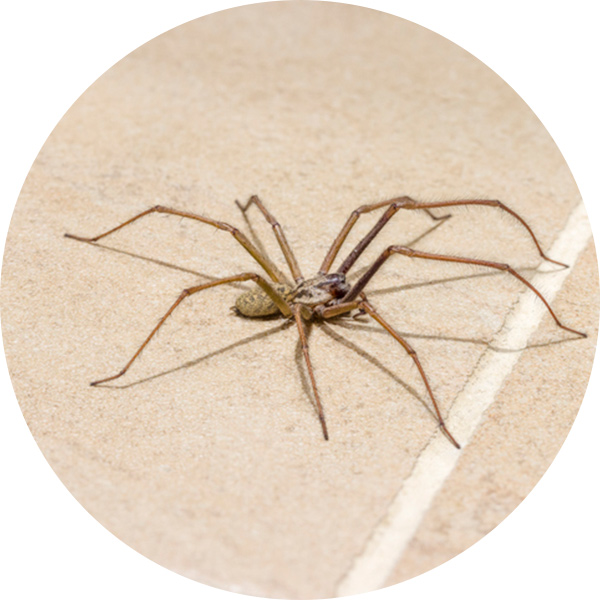
House Spider
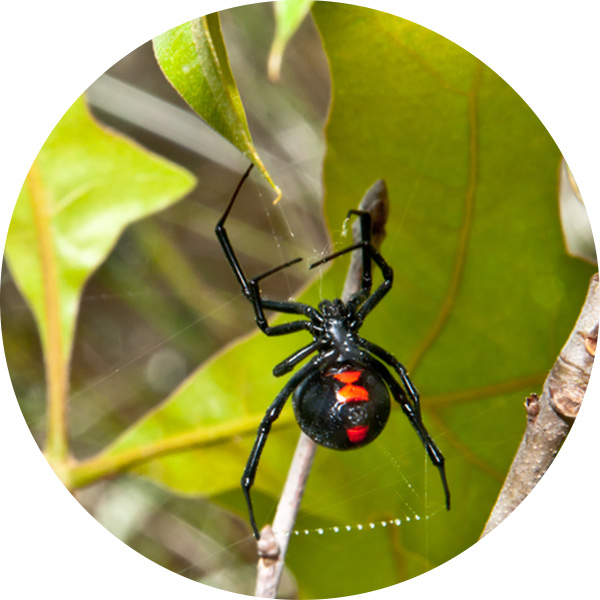
Black Widow Spider

Brown Recluse Spider
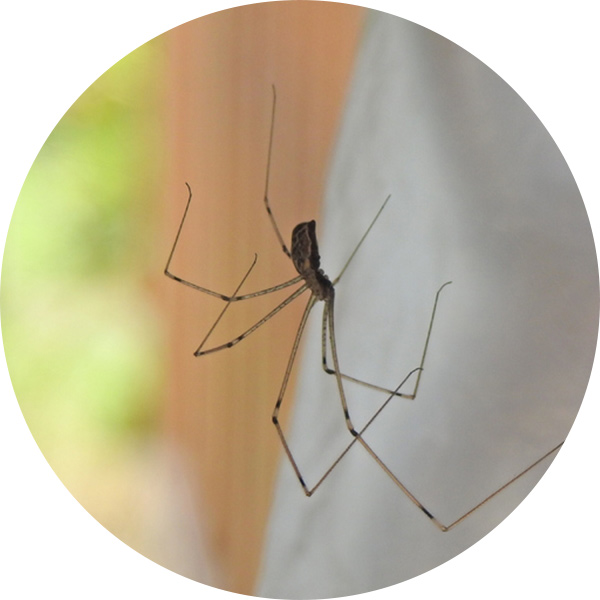
Cellar Spider
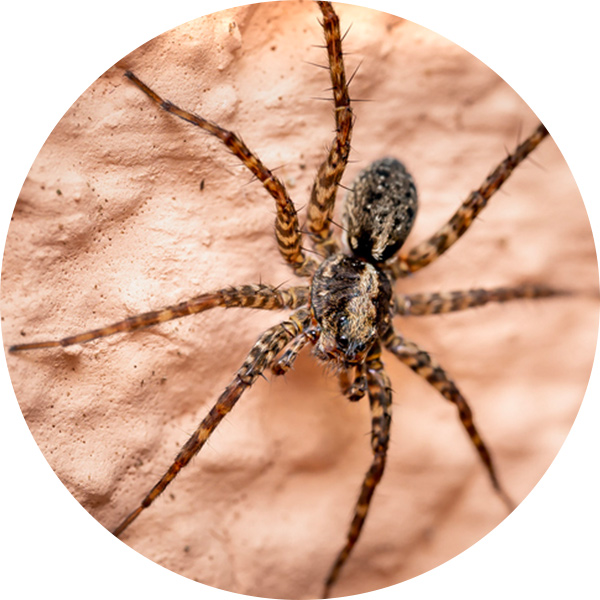
Wolf Spider
How To Identify Spiders
Spiders can be identified by their eight legs, two body parts (cephalothorax and abdomen), and the presence of silk-producing structures. To identify a spider infestation at home, look for an abundance of spider webs in corners, windows, or other secluded areas, as well as the presence of multiple spiders of various sizes and species in different parts of the house.
Spider Appearance
Spiders are arachnids characterized by their two main body regions: the cephalothorax (fused head and thorax) and the abdomen. They have eight legs and usually possess multiple pairs of eyes, although the number and arrangement vary among species. The size, color, and shape of spiders can vary significantly, with some species being small and inconspicuous while others are large and brightly colored. They have chelicerae, specialized mouthparts used for injecting venom into their prey.
Spider Habitat
Spiders are found worldwide and inhabit diverse environments, including forests, grasslands, deserts, and human-made structures. They can be found in various microhabitats, such as vegetation, leaf litter, tree trunks, burrows, and webs. Some spiders are adapted to aquatic environments, while others thrive in dry or humid conditions. Spiders are highly adaptable and can colonize both indoor and outdoor habitats, depending on the species.
Spider Diet
Spiders are carnivorous and primarily feed on insects and other small arthropods. They are skilled predators and use various hunting strategies to capture their prey. Some spiders actively hunt by chasing or ambushing their victims, while others build intricate webs to ensnare flying or crawling insects. Once caught, spiders immobilize their prey by injecting venom through their chelicerae and consume it at their leisure.
Spider Behavior
Spiders exhibit a wide range of behaviors depending on the species. While some spiders are solitary and establish their territories, others may display social behaviors, live in colonies, or exhibit communal web-building. Spiders use silk for various purposes, including building webs, constructing egg sacs, creating shelters, and capturing prey. They can also exhibit complex courtship rituals, communication through vibrations or chemical signals, and defensive behaviors when threatened.
Spider Reproduction
Most spiders reproduce sexually, with males using various courtship displays and behaviors to attract females. Male spiders transfer sperm to specialized structures called pedipalps and then use these structures to inseminate the female during mating. After mating, females typically lay eggs into silk egg sacs, which they may guard and protect. Spider eggs hatch into spiderlings that undergo a series of molts, gradually growing into adult spiders. The time span for development varies widely among species and can range from a few weeks to several years.
Spider Prevention
Prevention and control measures for spiders largely depend on the level of infestation and the species involved. Regularly removing webs and sealing gaps, cracks, and openings in buildings can help prevent their entry. Insecticides may be used as a targeted treatment for controlling spiders, but they should be used judiciously and according to label instructions. Proper sanitation practices, such as eliminating other insect populations that serve as spider prey, can also aid in controlling spider populations. If dealing with venomous or dangerous spiders, it is recommended to seek professional pest control services to ensure safe and effective control measures.

$50 Off Year Round Pest Control
Truly Nolen is a family-owned company with 85 years of experience providing the best pest control. If you’re not completely satisfied, you’ll get a full refund on your most recent service with our 100% money back guarantee.
The Truly Nolen Approach
Environmentally Conscious
We work to minimize our impact on the environment by using naturally occurring materials whenever possible.
Pet Friendly
Truly Nolen uses an Integrated Pest Management (IPM) approach designed with your pets in mind.
100% Money Back Guarantee
If you’re not completely satisfied, you’ll receive a full refund on your most recent service.
How Truly Nolen Gets Rid of Spiders
Truly Nolen’s process for treating a spider infestation typically involves a thorough inspection to identify spider entry points, web locations, and areas of high activity. They may implement a combination of physical exclusion techniques, such as sealing cracks and gaps, along with targeted insecticide applications to eliminate spiders and their webs. Ongoing monitoring and follow-up visits may be conducted to ensure the effectiveness of the treatment and address any recurring issues.
Frequently Asked Questions
Are all spiders venomous?
No, not all spiders are venomous. While all spiders possess venom to some extent, the majority of spider species have venom that is not harmful to humans. Only a small number of spider species have venom potent enough to cause significant health issues.
Are spiders beneficial or harmful?
Spiders are generally considered beneficial as they help control populations of other pests like insects. They play an important role in maintaining the balance of ecosystems. However, some people may find their presence undesirable due to fear or concerns about potential bites.
How can I prevent spider infestations in my home?
To prevent spider infestations, it’s important to reduce potential entry points by sealing cracks, gaps, and openings in windows, doors, and walls. Keeping your home clean and clutter-free, removing spider webs regularly, and controlling other pests that may attract spiders can also help prevent infestations. Learn More!
Are spider bites dangerous?
Most spider bites are harmless and cause only mild symptoms such as redness, itching, or swelling. However, certain venomous spiders like the black widow or brown recluse can cause more severe reactions and may require medical attention. It’s essential to be cautious and seek medical advice if you suspect a venomous spider bite.
Can I eliminate spiders completely from my home?
Complete elimination of spiders from a home can be challenging and often unnecessary. Spiders are natural inhabitants of outdoor environments and may occasionally find their way indoors. However, with proper preventive measures and regular pest control maintenance, you can reduce spider populations and keep their presence at a minimal level. Learn More!

